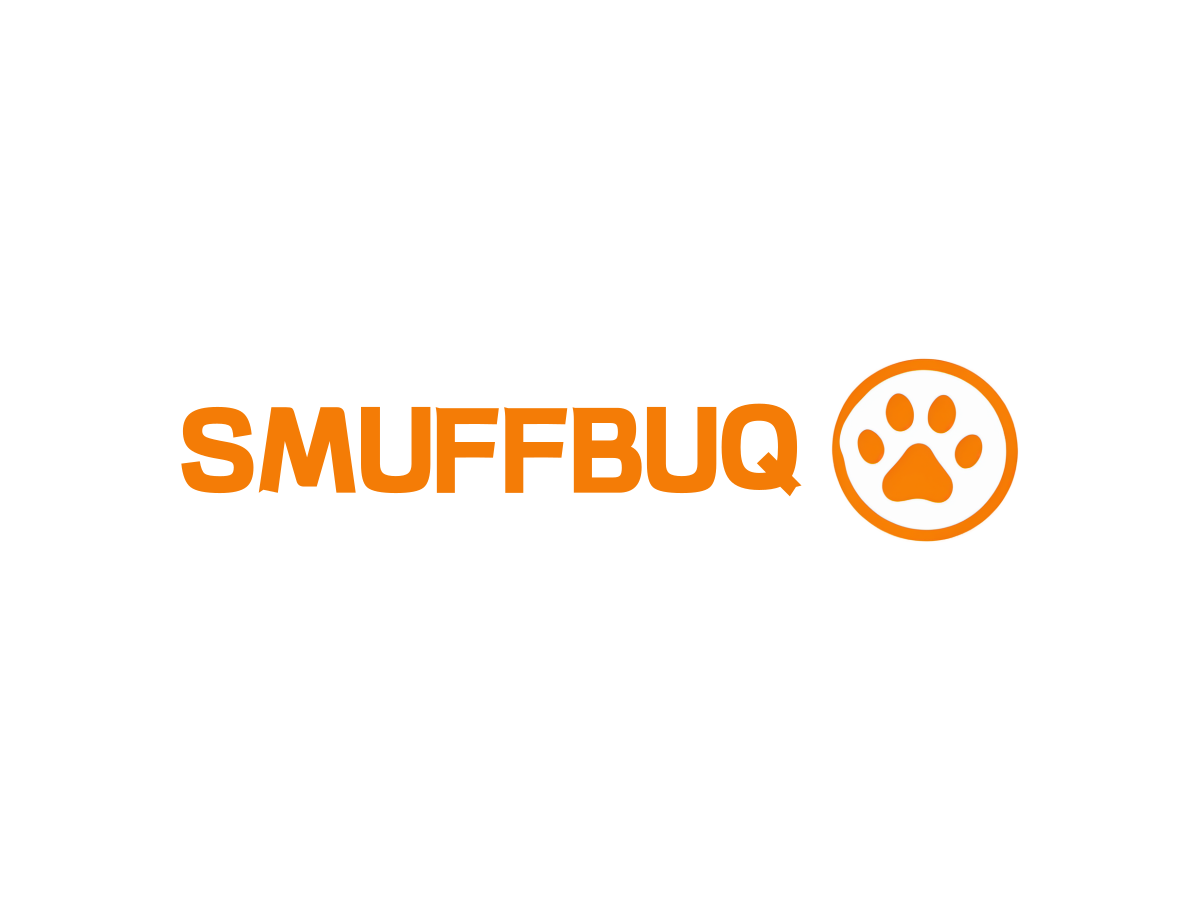What are the different types of dog harnesses and leashes?
Walking your dog should be enjoyable, but choosing from countless harness and leash options can be overwhelming. Many pet owners struggle to find the right combination that ensures comfort, control, and safety.
Dog harnesses come in five main types: back-clip, front-clip, dual-clip, step-in, and vest harnesses. Leashes vary from standard (4-6 feet long) to retractable, adjustable, hands-free, and training leads. The best choice depends on your dog’s size, behavior, and your specific walking needs.
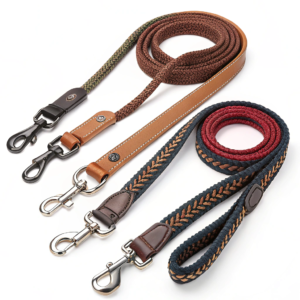
When I first started helping clients choose walking equipment, I was amazed at how the right I was amazed at how the right I was amazed at how the right harness and leash combination could transform their daily walks1
What is the best type of harness for a dog that pulls?
Walking a dog that constantly pulls can be frustrating and even dangerous. Many owners resort to stronger corrections or avoid walks altogether, missing out on essential exercise and bonding time.
For dogs that pull, front-clip or dual-clip harnesses work best. Front-clip harnesses redirect momentum sideways when dogs pull, discouraging the behavior. Dual-clip designs offer versatility with attachment points on both chest and back, providing control options for different situations.
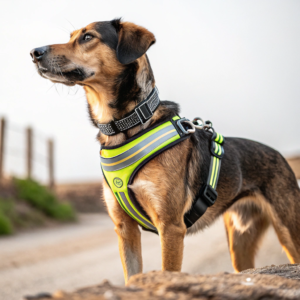
I’ve fitted hundreds of dogs with anti-pull harnesses over the years, and the transformation can be immediate and remarkable. Let’s explore the options in more detail to help you find the right solution for your pulling pooch.
Front-Clip Harnesses
Front-clip harnesses are my go-to recommendation for most pullers. They work through a simple but effective mechanism:
- The leash attaches to a ring positioned at the center of your dog’s chest
- When your dog pulls, the design causes them to turn slightly toward you
- This redirection makes forward pulling less efficient and more controllable
- Dogs quickly learn that pulling doesn’t get them where they want to go
Popular front-clip options include the Easy Walk Harness, Balance Harness, and Freedom Harness. In my experience, these work best for moderate pullers and dogs that are responsive to gentle guidance.
Dual-Clip Harnesses
For stronger or more determined pullers, I often recommend dual-clip harnesses that offer both front and back attachment points:
| Attachment Point | Best Used For | Training Stage |
|---|---|---|
| Front Clip | Active training sessions and high-distraction environments | Early training |
| Back Clip | Relaxed walks after training progress | Maintenance |
| Both (with double-ended leash) | Maximum control for very strong dogs | Transition phase |
The versatility of dual-clip harnesses allows you to adjust your control strategy based on the situation. I’ve found this particularly helpful for clients with reactive dogs who might need different levels of control in different environments.
Head Halters
While not technically harnesses, head halters like the Gentle Leader deserve mention as another solution for pulling. These fit around yourThese fit around your dog’s muzzle and behind the ears, giving you control of your dog’s head direction1. When the dog pulls
Head halters can be very effective but require proper introduction and conditioning. Many dogs initially resist them, so I always recommend gradual, positive association training when introducing a head halter.
Remember that equipment alone won’t solve pulling problems—consistent training using positive reinforcement is essential. The right harness simply gives you better control while you work on teaching loose-leash walking skills.
What do the different colors of dog harnesses mean?
Shopping for dog harnesses can be confusing when faced with various colored options. Many owners don’t realize these colors often carry important messages about a dog’s temperament, health status, or training needs.
Dog harness colors can indicate a dog’s temperament or special needs. Yellow typically means a dog needs space, red warns of potential aggression, blue identifies dogs in training, green signals friendly dogs, orange denotes no dogs nearby, and purple indicates no food due to allergies or diet restrictions.
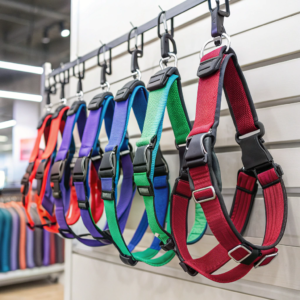
I’ve seen color-coding help prevent many uncomfortable or dangerous situations during walks. Understanding this informal but increasingly recognized system can make interactions safer for everyone.
The Color Code System
The color-coding system for dog equipment originated with the Yellow Dog Project, which promoted yellow ribbons for dogs needing space. This concept has expanded to include multiple colors, each with a specific meaning:
-
Yellow: "I Need Space"
Yellow harnesses, leashes, or ribbons indicate dogs who need extra space. This could be because they’re:
- In training or rehabilitation
- Recovering from surgery or illness
- Fearful or anxious around strangers
- Elderly and easily startled
When I see a dog in yellow equipment, I always give them plenty of room and advise clients to do the same.
-
Red: "Caution"
Red typically warns of potential aggression or reactivity issues. These dogs may:
- Be uncomfortable around other dogs
- Have fear-based reactions to strangers
- Become overstimulated in certain environments
- Have a history of biting or lunging
Red doesn’t necessarily mean dangerous—it simply signals the need for careful management.
-
Blue: "In Training"
Blue often identifies service dogs in training, therapy dogs, or pets working through behavioral training programs. These dogs should not be distracted as they learn their jobs.
-
Green: "Friendly"
Green signals a dog that’s generally social and approachable. These dogs typically enjoy meeting new people and other dogs.
-
Orange: "No Dogs"
Orange often indicates a dog that doesn’t do well with other dogs but is fine with humans.
-
Purple: "No Food"
Purple can signal that a dog has food allergies or dietary restrictions and should not be offered treats.
While this color system isn’t universally standardized or officially recognized, it’s becoming increasingly common in many communities. I always encourage clients to respect these visual signals and teach them how to use appropriate colors for their own dogs.
Beyond Colors: Other Visual Indicators
In addition to colors, you might notice other indicators on harnesses or leashes:
- Patches or Tags: "Do Not Pet," "In Training," or "Service Dog"
- SDUK (Service Dogs UK) Branded Equipment: For legitimate service animals
- Muzzles: Indicate a dog that might bite (always give these dogs extra space)
Being aware of these visual communication tools has dramatically improved my clients’ walking experiences, especially those with reactive or special needs dogs.
What is the difference between a vest harness and a strap harness?
Choosing between vest and strap harnesses confuses many dog owners. The differences affect not just appearance but also functionality, comfort, and The differences affect not just appearance but also functionality1, comfort, and suitability for different dogs and activities
Vest harnesses cover more of a dog’s body with fabric panels and provide better weight distribution, comfort, and security. Strap harnesses use minimal material with adjustable webbing straps, offering better ventilation, easier cleaning, and typically lower cost. Each design suits different dog types and activities.
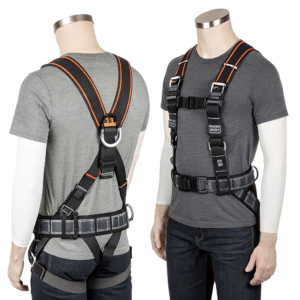
Having fitted dogs of all shapes and sizes, I’ve developed clear guidelines on when to recommend each style. Let’s examine these two popular harness designs in detail.
Vest Harnesses: Features and Benefits
Vest harnesses (sometimes called "padded harnesses") use fabric panels that cover more surface area on your dog’s body. They typically feature:
- Broad, padded chest and back panels
- Even pressure distribution across the chest and shoulders
- Multiple adjustment points for a custom fit
- Often include reflective stitching or trim for visibility
- May have handle(s) on top for additional control
I recommend vest harnesses for:
- Small dogs and puppies: Their delicate frames benefit from distributed pressure
- Dogs with sensitive skin: The wider coverage prevents the rubbing that narrow straps can cause
- Escape artists: More contact with the body makes these harder to slip out of
- Working or service dogs: The secure fit and control handles are beneficial
- Winter use: They provide some extra warmth in cold weather
The primary disadvantages include potential overheating in hot weather, longer drying time when wet, and usually higher cost than strap models.
Strap Harnesses: Features and Benefits
Strap harnesses use minimal materials, consisting mainly of adjustable webbing that forms a framework around the dog’s body:
- Lightweight design with minimal material
- Typically feature 2-4 adjustable straps
- Various configurations (H-style, Y-style, step-in)
- Maximum airflow around the body
- Generally lower cost than vest styles
I find strap harnesses work best for:
| Dog Type/Situation | Why Strap Harnesses Work Well |
|---|---|
| Active, athletic dogs | Allow full range of motion |
| Double-coated breeds | Prevent overheating and fur matting |
| Hot weather walking | Maximize ventilation |
| Swimming/water activities | Dry quickly, less waterlogging |
| Dogs who dislike things over their head | Step-in styles are less invasive |
The main drawbacks includeThe main drawbacks include potential pressure points from narrower straps, less security for escape-prone dogs, and fewer features like handles or attachment points1
Hybrid Options
Many modern harnesses combine elements of both designs, such as:
- Strap harnesses with padded chest plates
- Vest fronts with minimal back straps
- Adjustable padding that can be added or removed
These hybrids aim to capture the benefits of both styles while minimizing drawbacks. For many of my clients, these middle-ground options provide the ideal balance of comfort, security, and practicality.
When helping clients choose between vest and strap harnesses, I consider their dog’s body type, coat, activity level, and any behavioral concerns. A sighthound with thin skin and little body fat might benefit from a padded vest harness, while an active Husky who runs hot might be more comfortable in a minimalist strap design.
Conclusion
The right harness and leash combination can transform your walking experience with your dog. For pullers, front-clip or dual-clip harnesses work best. Color coding communicates your dog’s needs to others, while the choice between vest and strap designs depends on your dog’s specific needs and activities.
